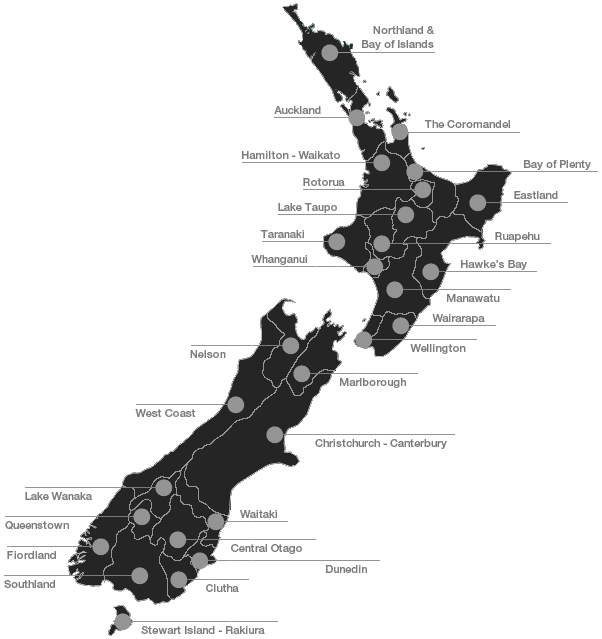
Facts & Figures
With more than 4.5 million inhabitants in around 270,000 square kilometer, New Zealand is a relatively sparsely populated country by OECD standards. Consequently, its population density is relatively low, at 16.66 people per square kilometre. This small country surrounded by the Pacific Ocean is comparable in size to the United Kingdom or the Philippines. It is formed by two major land masses – the North and the South Islands - and a number of smaller islands. The two main islands are divided by a 22km stretch of water called the Cook Strait.
New Zealand is divided into 29 regions, each with distinct physical attributes, diverse culture and history, and unique points of interest.

New Zealand has a mixed economy that operates on free-market principles. It has a sizeable service sector, complemented by a productive agricultural sector – due its high proportion of winter sunshine hours and considerable rainfall - and related manufacturing industries. New Zealand is also a popular overseas visitor destination and tourism is an important source of export income.
Rugby union is considered the national sport and attracts the most spectators. Golf, netball, tennis and cricket have the highest rates of adult participation, while football (soccer) is top among young people. New Zealand is known as well as for its extreme sports, adventure tourism and strong mountaineering tradition. Other outdoor pursuits such as cycling, fishing, swimming, running, tramping, canoeing, hunting, snow sports and surfing are also popular.
The New Zealand's official languages are English, Maori and
New Zealand Sign Language, although English is the predominant
language in New Zealand, spoken by 98 percent of the population.
However many other languages are spoken due to a significant
number of immigrants in the country – 23% of population - manly
from East Asia.
